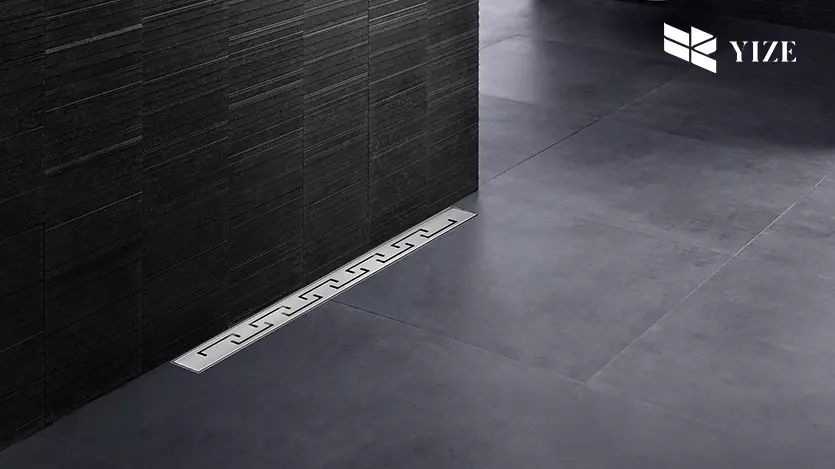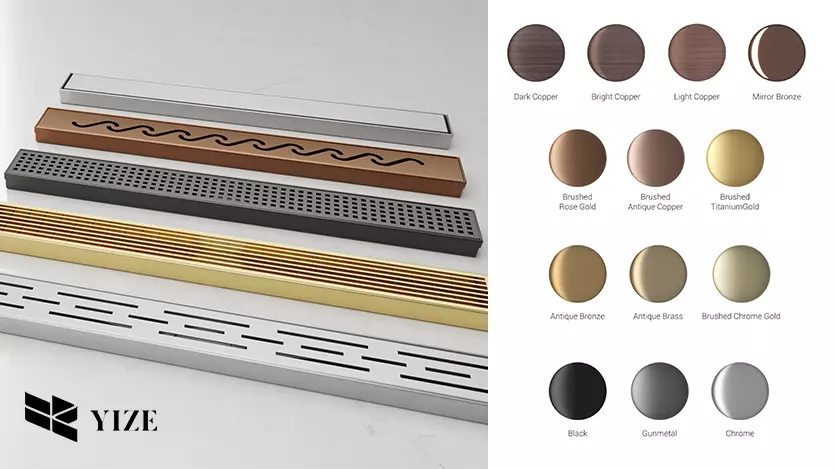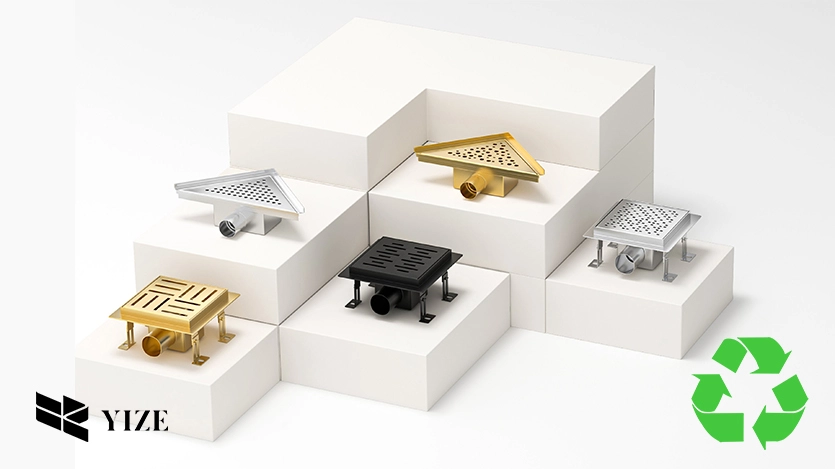I. Introduction

Proper selection of your indoor drainage systems relies on choosing the right linear drain supplier. Linear drains are an important part of the way in which water flow is managed, the way it prevents flooding, and how the water is kept clean and dry in an indoor environment. Besides products, a reliable supplier becomes a quality, support, and peace of mind provider for your investment. In this detailed guide, we show you how to find the right supplier for your indoor linear drain requirements.
II. Understand Your Indoor Requirements
Before you look for indoor linear drains specify your requirements that should fulfill. Where will these drains be used—bathrooms, kitchens, laundry rooms, or other indoor locations? Knowing what this is will help narrow your search, depending on what you need, for example, if you need drainage, capacity, design or material in different areas then they may all be different so know that beforehand to save time.
- Establish the exact place (bathroom, kitchen) you will use it, and how often.
- If a special design to have hidden or seamless drains are preferred, check this one as well.
- Make plumbing fixtures and structures compatible with existing plumbing fixtures without remodeling.
III. Material Quality and Durability
Length of service and performance of your drain system are dependent on the quality of the materials. Choose suppliers who use high quality corrosion resistant materials such as stainless steel or quality plastic composites. For instance a coarse sieve is stainless steel, which is robust, easy to clean, and rust resistant, and is thus appropriate for indoor areas subject to frequent watering. Make sure that the supplier tells you all about the material composition and whether that material has any certifications to make sure it’s durable.
- Seek anti corrosive properties to stop rust & wear.
- Think of materials that are resistant to chemical cleaners.
- Make sure that everything is easy to clean and maintain it over time.
IV. Product Range and Customization Options

If you are a leading linear drain supplier then you need to have an array of products to fit various products such as installation type and floor style. Look for suppliers who offer:
- Various Sizes and Styles: Depending on your application size you may need different sizes of linear drains, such as small drain sizes for showers, to larger floor drains.
- Customizable Designs: There are suppliers who are able to custom design your item and let you choose colors, finishes, and further orders to complement your interior service. Other customizations can also be chosen such as different grates or covers enhancing the appearance of your space.
V. Certifications and Compliance with Standards
Products from reliable suppliers are those which are industry standards and certification. Examples of this can be found by looking for standards such as ISO certifications, which prove a company’s willingness to do things right. Secondly, all one would expect to meet when purchasing a drain, namely plumbing codes and safety requirements for the place in which you reside, must be adhered to by your drains. These certifications are what you check because it makes sure you’ve invested in a product that holds established quality and safety benchmarks.
- Cover the contents to prevent misappropriation.
- Choose certified products (ISO).
- Check any eco friendly or low VOC material for Indoor Air Quality.
VI. Drain Flow Rate and Capacity
The second part is the flow rate (how much water the drain can deal with). So, suppliers should offer drains that match your needs in terms of their specifications: that could be light residential use or high capacity areas such as commercial kitchens. If a supplier gives you a clear picture of flow rates then you can make an informed decision, irrespective of practical requirements to avoid future drainage problems.
- Determine if the flow rate equals what is supposed to be that water volume.
- Verify product capacity by asking about flow rate testing data.
- Find out if the supplier has a handout on usage in high flow areas.
VII. Installation Support and Documentation
When you will choose a reputed supplier, he will guide you through installation process by giving clear documents, guidelines and technical support. Getting support in installing a drain is important as a wrongly installed one can cause water to pool, leaking, or it could even ruin the flooring and wallpaper. Make sure your suppliers provide installation manuals, videos or customer service assistance helps you through the process smoothly and efficiently.
- Search for clear installation guides and step by step videos.
- As we are researching these, if they’ve got any kind of customer support service after installation is quite beneficial.
- Check if they have an option for the help with professional installation.
VIII. Product Warranty and After-Sales Support
Also, strong indicator of a suppliers confidence of their products. A good supplier will also include warranties like empty warranties from manufacturing defects, that are enough to create peace of mind that whatever isn’t there is going to be addressed quickly. Secondly, if you have any problems after installation then you’ll need after sales support. Look for suppliers with a proven track record of good customer service and good post sales support.
- See what the warranty is for — is it a defects warranty, a corrosion warranty — and what’s included in it.
- For additional services or maintenance options, ask.
- Make sure there’s is a easy process for claims or returns.
IX. Reputation and Customer Reviews
Research the supplier’s reputation by finding out customer reviews, testimonials and case studies. Constant positive feedback on product quality, reliability and customer service is what to look for. Most of reliable suppliers will have customer testimonials and reviews on their website or on third party review sites that answer the questions about past buyers’ experience.
- Check out the reviews from similar indoor applications.
- Testimonials verify customer service experiences.
- See unbiased commentary from third party sites.
X. Cost and Value for Money
Of course, price is absolutely a thing — but it shouldn’t be the only thing. Though higher priced, higher quality products can last longer, be more durable and have better performance and long term value. But before you compare prices from different suppliers, make sure that you look at things like quality, warranty and the type of support they offer. A slightly more expensive drain from a reliable supplier can cost you time and money in repair or replacement in the future.
- Choose the supplier based on the price paid in comparison to quality offered.
- Check for season discounts or buy in bulk.
- Find out if they have a price matching on similar quality products.
XI. Eco-Friendliness and Sustainability

If sustainability matters to you, check the sustainability practices are valued by your suppliers. Among others, some companies try to diminish their environmental footprint by using recyclable materiel or energy efficient manufacturing proceses. Not only does choosing a sustainable supplier help in green initiatives, it also can help your brand, or personal values.
- Ask if it is recyclable or biodegradable material.
- If you look for suppliers who produce in a low impact, energy efficient way.
- Also check if they have a sustainable packaging practices.
XII. Conclusion
To have efficient and long working linear drain , it is best you choose a good one among the linear drain suppliers. When you look at the certification, quality of material, customization, and backup support you can select the best. Remember that investing time in finding the ideal supplier will prevent problems in the future as your indoor spaces stay dry and look good.
Frequently Asked Questions (FAQs)
1. How do I know which linear drain size to choose?
Pick on the grounds of location, drainage prerequisites, and brilliantly another arrangement. For indoor areas, your supplier should tell you good sizes.
2. What materials are best for indoor linear drains?
Indoor use common with stainless steel and durable plastics as they are water, rust and chemical cleaner resistant.
3. Can I install the linear drain myself?
While it is possible, it’s recommended to have it professionally installed, to avoid misalignment and have it last.
